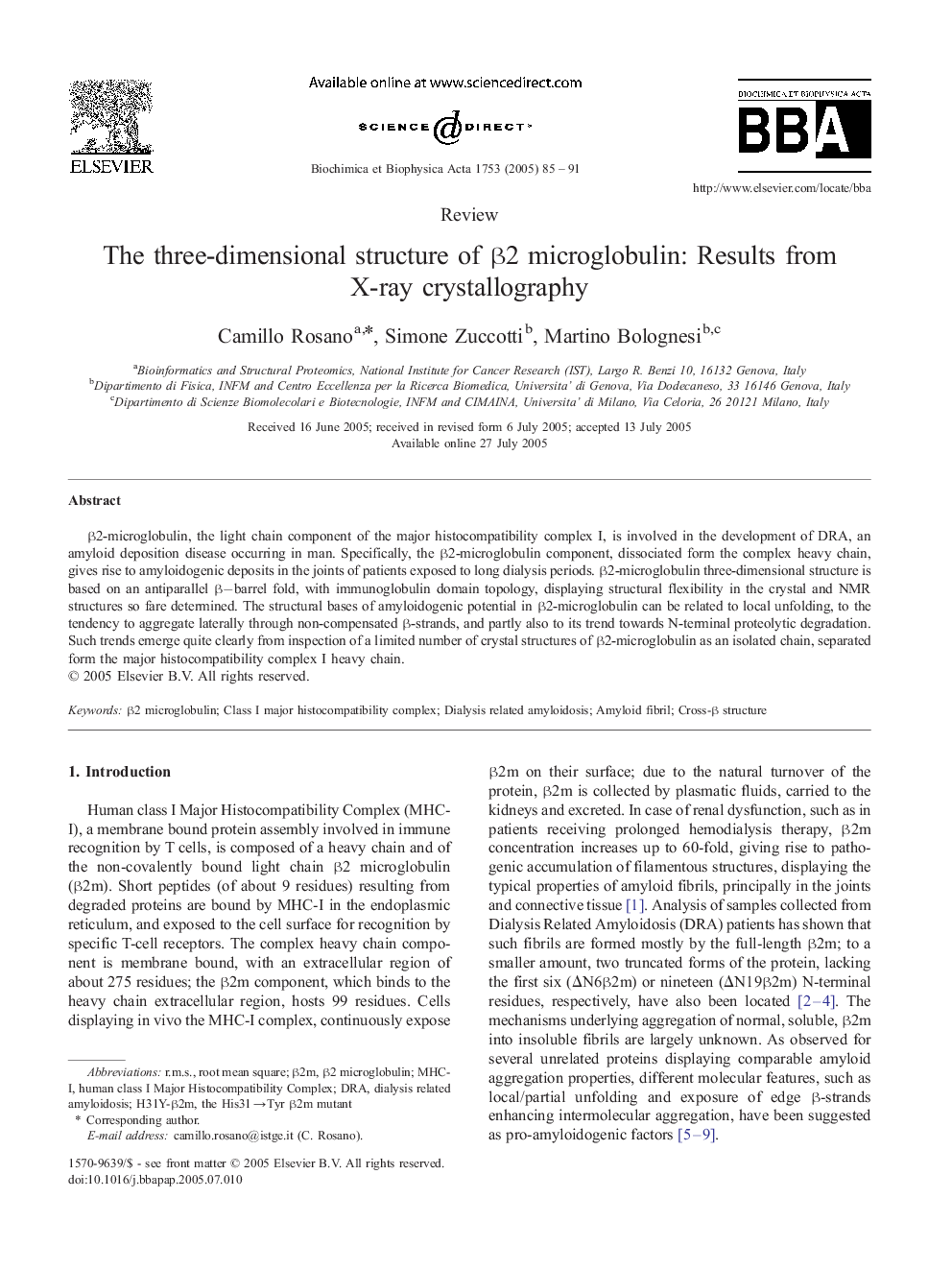| Article ID | Journal | Published Year | Pages | File Type |
|---|---|---|---|---|
| 10537578 | Biochimica et Biophysica Acta (BBA) - Proteins and Proteomics | 2005 | 7 Pages |
Abstract
β2-microglobulin, the light chain component of the major histocompatibility complex I, is involved in the development of DRA, an amyloid deposition disease occurring in man. Specifically, the β2-microglobulin component, dissociated form the complex heavy chain, gives rise to amyloidogenic deposits in the joints of patients exposed to long dialysis periods. β2-microglobulin three-dimensional structure is based on an antiparallel βâbarrel fold, with immunoglobulin domain topology, displaying structural flexibility in the crystal and NMR structures so fare determined. The structural bases of amyloidogenic potential in β2-microglobulin can be related to local unfolding, to the tendency to aggregate laterally through non-compensated β-strands, and partly also to its trend towards N-terminal proteolytic degradation. Such trends emerge quite clearly from inspection of a limited number of crystal structures of β2-microglobulin as an isolated chain, separated form the major histocompatibility complex I heavy chain.
Related Topics
Physical Sciences and Engineering
Chemistry
Analytical Chemistry
Authors
Camillo Rosano, Simone Zuccotti, Martino Bolognesi,
